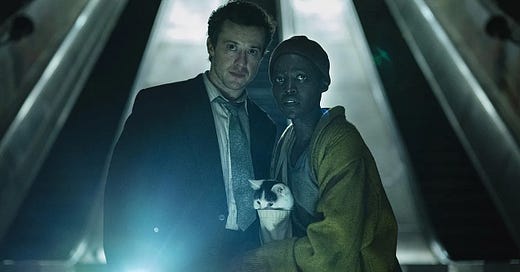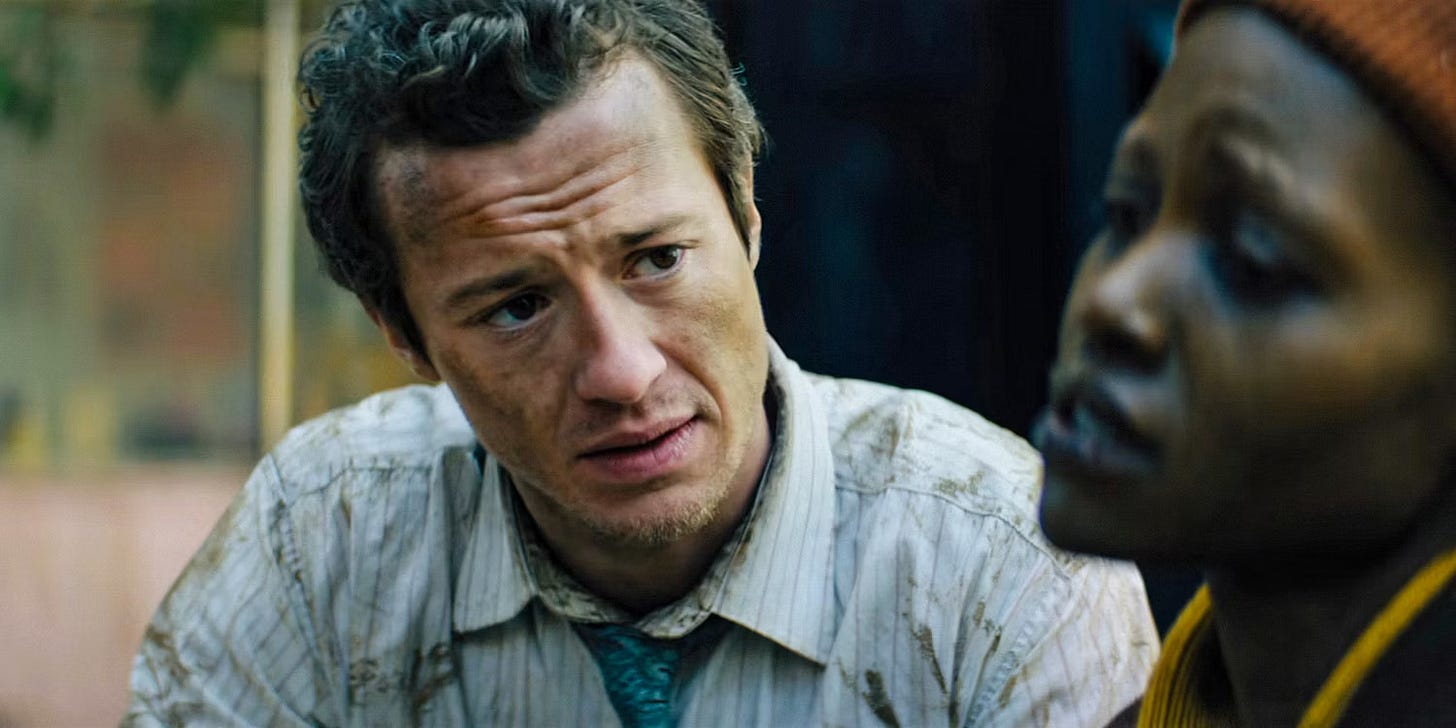To confess apprehension for the existence of A Quiet Place: Day One is understandable. The role of most prequels is to indulge in the controversial art of over-explaining. Many franchise prequels, from Star Wars to Alien, have embraced killing mystery in favor of expanding “lore”—A franchise-building tool favored by the Discord/Reddit/Twitter (X?) crowd that fuels enough discourse to keep merchandise out the door and studios in the black.
With director Michael Sarnoski being mostly fresh meat and the franchise ditching its beloved main cast for a day-one overhaul, the movie paints a target on itself before the jarringly vocal opening. However, its unconventional narrative choices win out with just as much heart, if not more, than its predecessors.
The setting has changed to The Big Apple, making it an ideal hunting ground for the familiar, multi-eared monsters. As the title suggests, it is the first day of their arrival, but, mercifully, it doesn’t tell us any more about these creatures than we knew beforehand. The mystery remains and concerns of the franchise overexerting itself into standard blockbuster fare, with larger location and set pieces, dwindle as the film focuses on Sam (Lupita Nyong’o)—A terminally ill protagonist on a journey to embrace life before cancer takes her.
Joining Sam late in the game is Stranger Things’s Joseph Quinn as Eric. At first, his late inclusion feels like Saronoski doubling back to give Sam someone to bounce off of during her trek. Instead, he becomes something of a godsend—a guardian angel that may or may not be too on the nose when the wayfarers find rest at a crumbling cathedral. Quinn commands the screen as a surprise show-stopper. His quietest (ha!) moments make me envision a world where he’s the next, great Hollywood actor. (Not to be confused with “superstar” or marquee headliner.)
Of course, A Quiet Place is all about the sound design. Granted, the characters don’t find themselves entrapped in story variables any different from their predecessors, making the rustles and creaks all too familiar, though no less grating. In a highlight where survivors tiptoe out of buildings to evacuate, the tiniest foot creaks crescendo amongst a growing crowd to alert their hunters of a buffet. It’s a painful reminder that there is no strength in numbers where monsters are concerned.
That isn’t to say the film treats the connection among people frivolously. Sidelining prequel norms of callbacks and cameos (though Djimon Hounshu appears briefly from the second film), Day One is primarily about the connection of two strangers in a world gone to hell. Relatable in any context. I questioned why Sarnoski would choose a character on the verge of death as the lead for a survival story. After all, why care for her safety if she’s doomed from the minute we see her? The choice was very deliberate. To know her—to have empathy for her and her needs is enough. It certainly was for Eric, who faced fear and fate to bring her a moment’s joy.
Movies are made of their time and for their time, but the humanity present in Day One is a reminder for all time. A world in chaos, and all of the unrelated personal struggles, is not an excuse to exorcise kindness. Quinn has demonstrated this twice while under attack by monsters. (Rest in peace, Eddie Munson.) May his choice of projects speak at the same decibels as his character’s actions in Day One.






